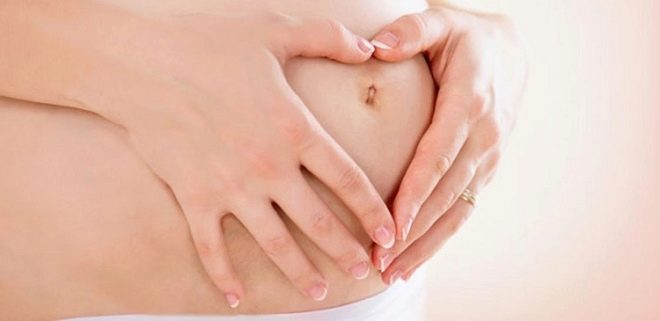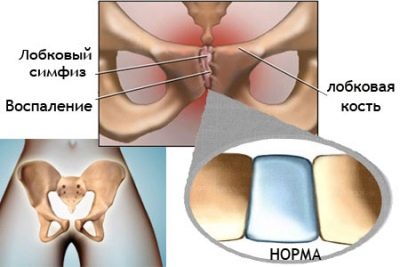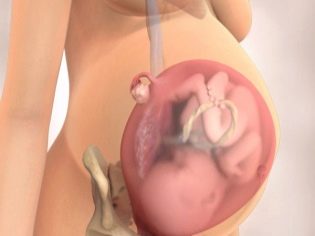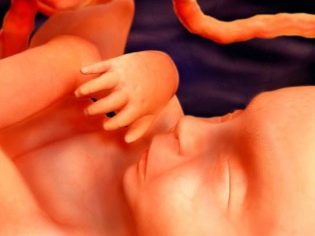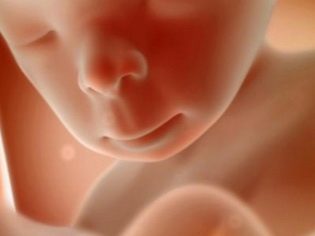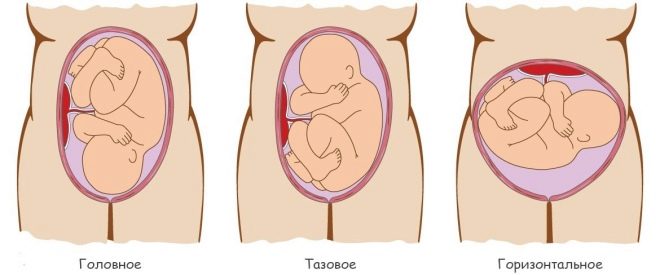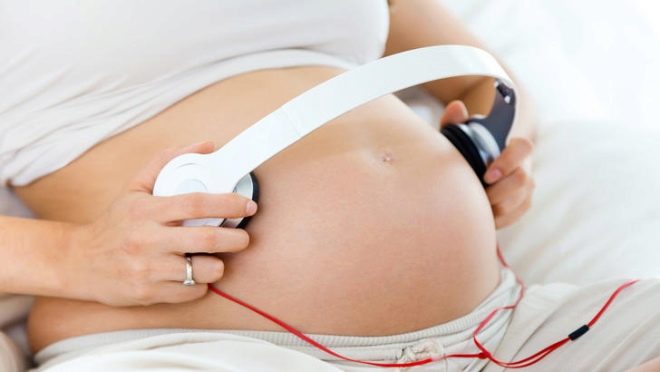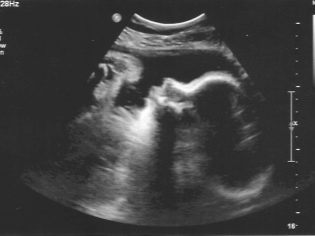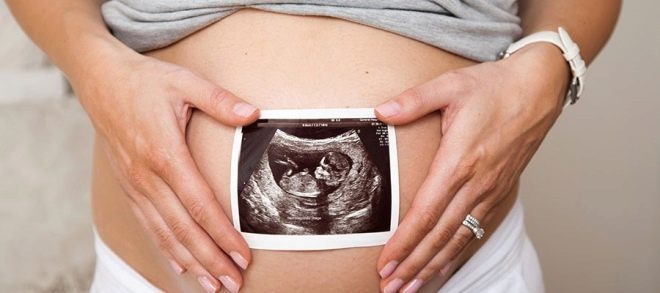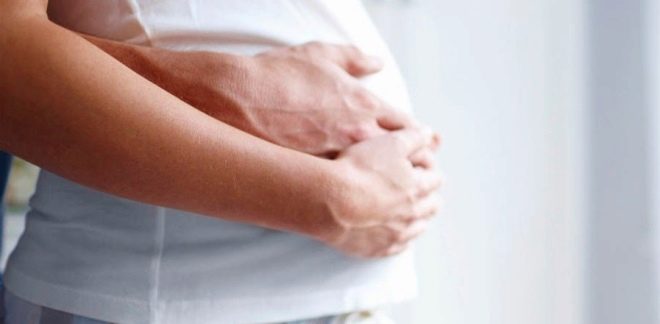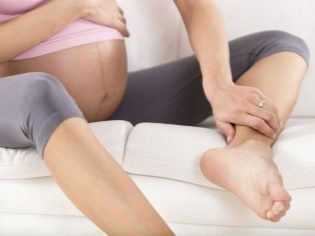35 week of pregnancy: what happens to the fetus and the expectant mother?
There comes the final period of your pregnancy. 35 week - time of serious tests for the future mom. The state of health worsens, it becomes difficult and difficult to wear the baby. But optimism is not worth losing, because in a month the woman will have a long-awaited meeting with her son or daughter, to whom she has been walking for nine long months.
How many months is it
There is a third trimester of pregnancy. 34-35 obstetric week almost completes the ninth obstetric month. Only one week is left before its end. Obstetricians count in pregnancy exactly 10 months, and not 9, as it is considered by the people. According to the Negale rule, exactly 280 days are added to the first day of the new cycle, this is how the estimated day of birth is calculated.
In one obstetric (lunar) week 7 days, in one month - exactly 4 weeks. That is why now you have 8 months and 3 weeks according to obstetric standards and 8 months according to the usual calendar. About 5 weeks until delivery.
This term is quite conditional, because the baby can be born before or after the DA (the expected day of birth). At the date set as intended for delivery, only 5% of births are accounted for.
Feelings of a woman
By the beginning of the 35th week, a woman already, as a rule, has time to get used to various unpleasant sensations. However, this week may well bring relief. This will happen if the belly of a pregnant woman "falls".
The kid theoretically at 35 weeks is quite capable of dropping his head down, snuggle up to the exit of the small pelvis. Such his posture indicates readiness for the birth. But a few more weeks may pass before the birth.
If the stomach "falls", it becomes easier for the woman to breathe, pressure on the costal arches decreases, heartburn decreases. When the baby decides to fall, no one will say. At 35 weeks, about 20% of women have a low head position. The rest has to endure all the pregnancy and deprivation of pregnancy in its later stages.
Fetal movements
The movements of the baby have become more rare. Now the crumbly tosses hard, and the woman feels her every move. Sometimes periods of activity of the child are quite painful for his mother.
The baby is already large, there is almost no free space in the uterus. He can not make coups as before. Now he only turns the head and moves the arms and legs.
But a woman needs to steadily count her movements every day. Despite the fact that they began to occur less frequently, there should still be at least 10 in 12 hours. It is necessary to count not only single movements, but also a series of movements, if they are consecutive, for one movement. Hiccup of a baby, which a woman feels like rhythmic “tapping” in her stomach, is not considered a stir.
If there is very little perturbation, this may indicate fetal hypoxia, entanglement or double cord entanglement around the neck, placental insufficiency, rhesus conflict. Be sure to visit the doctor and make CTG and ultrasound.Moreover, sharp, frequent perturbations can speak about oxygen insufficiency.
Such movements are characteristic of the early stage of hypoxia, when the child is trying with all his might to obtain additional oxygen for himself. In the later stages of hypoxia, the movements become lethargic and rare - the child “switches on” the oxygen saving mode.
Just in order to determine violations in time, it is recommended for a woman to read the movements of her baby and enter the data in a special table or simply write it in a notebook or notebook. When calculating, you must take into account the temperament of your baby and other factors that affect its activity. These are weather conditions, food for the mother, her well-being and mood. If a woman feels bad, has no appetite, she is under stress, then there is no need to wait for activity from the baby.
At the 35th week of gestation, some women already noticed that the babies began to “adapt” to the mother's regime. Many crumbs stopped actively kicking and jostling at night. Now they sleep with their mother, and wake up almost synchronously in the morning. Kids interact well with their parents - the baby can respond with joyful jerks to the hand if it is placed on the tummy of the mother or dad. The child is already in a position to show his pleasure and displeasure to his mother.
Pains
Pain in the current period are observed in all pregnant women. They are different in localization and intensity, but every woman without exception at 35 obstetric week feels “very pregnant” and has already learned to endure the discomfort associated with this. BAt this time, they are not a sign of pathology, but a completely natural “accompaniment”.
Almost all expectant mothers in the 35th week have complaints of pain in the perineum. The pubis is sore due to a divergence of the pelvic bones. This process began a long time ago, but the pain can appear only now. A special hormone, relaxin, acts on the bones and ligaments. It is produced by the body of the future mother in the third trimester and its task is to prepare the pelvis for childbirth. The bones need to be more mobile to release the baby’s head.
The ache in the pubic bone becomes slightly stronger at night, it is often felt in the morning when a woman rises from the bed. Between the legs it hurts more after a long standing, for example, in the kitchen at the table, as well as after a walk in nature, especially if you have to climb and descend the stairs.
If the pain syndrome does not cause restrictions on the movement of women, do not need to worry: everything that happens with the baby and mother is quite natural.
You should go to the doctor if the pain becomes impossible to tolerate, the woman can not stand, sit, climb stairs. Unable to sleep due to severe sharp pain in the pubic symphysis at night. In this case, an examination is necessary to exclude the symphysitis. - A complication in which independent labor in most cases is contraindicated. A woman, if a symphysitis is confirmed, is undergoing a caesarean section so as not to cause a disabling injury of the pubic symphysis.
Already familiar to the future mother sensations - back pain and sacrum. They are associated with the growth of the uterus and stretching its ligaments. The waist pulls slightly, as in menstruation. The huge belly causes a shift in the center of gravity, and this causes the woman to have a back and tailbone. Pain becomes more pronounced if a woman is standing or walking for a long time. But if she gets some rest, lies down, then they retreat.
Due to weight gain, my legs hurt. Many pregnant women complain of aching knees and ankles. Often at this time teeth hurt, this is a consequence of the loss of calcium, which is necessary for a child as a building material of his bone skeleton. Dental treatment at 35 weeks is possible. If you get a toothache, be sure to visit the dentist.
A woman can torment training bouts. In the vast majority of primipara women, they have long been present. In pregnant women, re-or third-time false contractions or Braxton-Hicks cramps may begin this week or even later. For some, they start just before the birth in just a few days.
Recognizing false contractions is easy - the uterus comes to tone, the stomach becomes hard. After a few minutes or seconds, the uterus muscles return to a calm state.
It is easy to remove training fights, having drunk "No-shpu", having assumed horizontal position. Real fights, if they start at this time, will only intensify. Doctors do not have a common opinion regarding the purpose of false contractions. Most often it is believed that because the muscles of the uterus and cervix is preparing for childbirth. However, women who did not have a single false contraction during pregnancy are not uncommon and give birth without significant features.
With what pains now you need to go to the hospital to guess it is not difficult. These are intensifying contractions, accompanied by unusual secretions from the genital organs, pulling sensations in the lower back, “giving up” into the rectum. In this case, the onset of preterm labor is possible.
Allotment
The nature of discharge at obstetric week 35 may change. In normal light discharge, small fragments of mucus may appear. This is not a reason for panic. The body is actively preparing for childbirth. Small mucous membranes may well be a sign of the beginning of cork discharge, which for many months from conception reliably closed the cervical canal from the penetration of unwanted microflora.
The cervix begins to mature. It softens, the cervical canal begins to open slightly. If you find a mucous clot with streaks of blood on a daily pad, this means that the cork did not come off piece by piece, but all, in its entirety. This means that childbirth is just around the corner and contractions may begin in the coming days.
If there is no mucus in the secretions, this, in turn, does not mean that labor will not start ahead of time. Sometimes the cork moves away simultaneously with the waters already in the process of contractions. But now a woman needs to be extremely attentive and alert.
Light homogeneous, odorless or with a faint smell of yoghurt are still considered the norm. Green and gray discharge at week 35 speaks of a genital infection, white discharge with itching and a yeast odor speaks of thrush. These pathologies must be treated, because by the time of birth, the genital tract must be free from infection in order to rule out the likelihood of infecting the baby.
Particular attention in this period should be given to watery discharge. They can be a sign of leakage of amniotic fluid. “Ambulance” should be called if the water is fully withdrawn. This is a sign of the onset of labor.
If the leaking water has a greenish color, this may indicate a pathological condition of the baby, possibly hypoxia, in which the child made an early defecation in utero and cal meconium got into the water. In this case, the delivery is urgent. The most dangerous is bloody discharge. They can talk about problems with the placenta.
With the appearance of blood or blood secretions from the genitals, a woman needs to take a horizontal position and wait for the ambulance team in it. You can not hesitate - placental abruption often leads to the death of the child and massive bleeding from the mother.
Psychological state and mood of pregnant
Many women at 35 weeks, there is a feeling that they can not cope with a newborn. There is no trace of former confidence. The closer to childbirth, the more unstable the mood and emotions of the future mother.A month before giving birth to a woman, it becomes quite difficult to find a common language for her family members, a pregnant woman is naughty, often crying and experiencing for no apparent reason.
Relatives should understand that now the woman is “torn” between the desire to quickly give birth to the baby and the fear of the upcoming birth. No need to think that if a woman expects a third or fourth baby, then she is no longer afraid of anything and is ready for anything. The fear of the first childbirth cannot be compared with the fear of repeated ones, because a woman is already well aware of the upcoming process and its possible complications.
Some women are afraid to go to the toilet "big". They have a fear that childbirth will begin right during a bowel movement. Almost all women in this period are experiencing in the depths of their souls because of their physical awkwardness and awkwardness, due to the gained kilograms, due to the fact that the figure has changed dramatically. In the blood of the future mother again, as in the first trimester, hormones are raging, but now estrogens, and they also affect her mental state and mood.
Many women have insomnia, and during the day they feel like a squeezed lemon. Appears quite explainable irritability, categorical, touchy and unwillingness to compromise. Household people need to be patient and understanding, this state is not eternal, soon it will pass. It is also worthwhile to forgive a pregnant woman for her excessive forgetfulness and confusion - these are also normal states for the last weeks of pregnancy.
If the future mother fails to cope with emotions on her own or with the help of her friends and relatives, a psychologist will help her, who is completely free at any antenatal clinic.
Changes in the body
All the processes that are now happening in the mother's body, are aimed at preparing for early delivery. The hormonal background changes, estrogens begin to be actively produced and the production of progesterone decreases. The stomach is already so big that a woman does not see her own legs at all. The gait of a pregnant woman becomes heavy, “ducky,” and under her weight the arch of feet flattens a little, due to which customary shoes become uncomfortable.
Uterus growth
Uterine growth is now less intense than before. The rule “one week - one centimeter in height” no longer applies. Now, despite the fact that it is 35 weeks, the height of the uterus is about 33 centimeters. Above the navel line, the uterus rises 14-15 centimeters. Muscle fibers have increased in length, and the ligamentous apparatus undergoes significant overload.
When the stomach drops, the height of the uterus floor will decrease, and there is nothing strange or pathological in this. In the meantime, the uterus, if the baby's head did not descend, occupies almost the entire abdominal cavity, supporting the diaphragm and squeezing the internal organs of the woman.
Because of this, the pregnant woman is breathing heavily, she is haunted by the feeling that she constantly lacks air. A woman may have severe shortness of breath. If oxygen is not sufficiently pronounced, dizziness appears, the pregnant woman needs to take several slow breaths and exhalations while standing in the knee-elbow position. There is not much time left to endure: as soon as the tummy sinks, breathing will become easier, the woman will again have the opportunity to take deep breaths.
The uterus puts pressure on the stomach, it causes a reflux of gastric juice into the esophagus, belching and heartburn develops. Pressure on the bladder leads to urination, inability to "tolerate", leakage of urine at the most inappropriate moments when a woman laughs or coughs. Loop of the intestine compressed by the uterus, strongly pushed back, are not capable of full peristalsis, as a result of which the woman develops constipation.
The cervix becomes shorter, begins the process of its maturation - smoothing and expanding the throat, both internal and external. As soon as the cervix becomes quite short, labor begins.In the meantime, the length of the cervix on average is about 28 mm, sometimes it can be shorter - within 23 mm, less often - long (about 37 mm). The length of the cervix is now being watched with particular attention if the woman is wearing an obstetric pessary or has surgical stitches on her neck. So women will soon be hospitalized, sutures and pessary need to be removed in advance, before childbirth has begun.
The muscles of the uterus can periodically strain, come to tone. If this is a completely physiological phenomenon, it is very troubling, it is worth discussing it with your doctor. A large number of preterm birth can be avoided if you pay attention to the alarming symptoms in time and consult a specialist.
To facilitate the wearing of a large abdomen at 35 weeks can a special prenatal orthopedic bandage.
Weight gain
Weight gain woman feels very good. The more she gained kilograms, the harder she now has to. This week's weight is made up of several parameters.
- About 30% of the value that a woman sees on the scales is the mass of the fetus.
- Approximately 5% is accounted for by the weight of the placenta and 6% by the weight of the amniotic fluid. Another 4% is the fat reserves of the mother herself.
- About a kilogram of the uterus weighs and it is about 8% of the total increase.
- About 10-12% in weight is the mass of blood, the amount of which has increased. And 5% is the weight of the mammary glands, which are also significantly grown.
Almost 13% of mom's weight is extracellular fluids. Treatment will be directed to their elimination in the event of edema and sharp changes in weight gain. It is recommended to weigh yourself now not once a week as it was before, but daily. This will help to monitor the condition of the pregnant woman and quickly respond to possible violations.
The total gain at week 35 averages 12 kilograms to body weight before pregnancy. If a woman is thin and she had a small deficit of her own kilograms, now they are “allowed” to gain up to 13 kilograms. Women with a normal weight of 35 weeks, according to the norms, are allowed to gain no more than 11.5 kilograms, and for women who had problems with extra kilograms before pregnancy were obese, by this time you can gain no more than 7.6 kilograms.
A weekly weight gain in normal amounts to no more than 200-300 grams. Given that now the baby is very intensively gaining its weight, a woman should reduce the daily calorie intake by about 200-300 Kcal. Otherwise, the "advantage" can not be avoided.
Excess weight is not the best assistant in childbirth, and after them the recovery of a woman who has gained too much will be longer.
If in the 35th week of pregnancy a woman notices strong fluctuations in the direction of weight gain, you should definitely consult with your doctor, because a sharp jump in body weight may indicate an increase in the amount of extracellular fluid, which can lead to swelling both external and internal and the development of a dangerous complication - preeclampsia.
Other symptoms
For maternity begin to prepare and mammary glands of the pregnant. Breast 35 week becomes large, "poured." Gradually expanding ducts through which the baby will receive milk.
This process is often accompanied by the release of colostrum. It is a nutrient fluid that contains proteins, fats, carbohydrates and a lot of vitamins. During the first days after birth, colostrum will fully satisfy the baby’s energy needs. Then there will be full breast milk.
Colostrum at week 35 is more active in women who already have breastfeeding experience. Primiparous colostrum may not be. This fact should not upset. The amount of colostrum during pregnancy is in no way interrelated with future lactation and the amount of milk.
If the discharge from the chest bothers the woman and causes inconvenience (soiling clothes and linen), a special bra should be worn for nursing mothers.It has special inserts that prevent leakage.
At week 35, headaches may worsen and worsen. The head hurts the future mother because of the drops in blood pressure, and also because of the general serious load on all organs and systems in general, and the vessels and the heart in particular. A woman can often experience rapid heartbeat, "flushes" of blood to the face and décolleté.
At the same time, a woman may feel bouts of weakness, they are most often associated with a decrease in hemoglobin in the blood of the future mother. A small anemia may well accompany the late stages of pregnancy. Week 35 is a period in which approximately 40% of women experience anemia. You can guess about it by such symptoms as dizziness, the appearance of "blue" circles under the eyes, the blueness of the lips (cyanosis), and the appearance of tinnitus. The hemoglobin rate for pregnant women is above 109 g / l.
If tests have shown a decrease in hemoglobin, do not panic. In most cases, anemia can be completely eliminated by the time of delivery, adding iron-rich foods to the diet (buckwheat, pomegranate juice, green apples, beef liver, peaches, beets, persimmons).
The skin of a pregnant woman becomes drier and the nails become more brittle. Affected hormonal changes, as well as a lack of calcium. At night, seizures may occur - "reduces" the legs. Unpleasant allergic rashes can now appear with any interaction with household chemicals, with new cosmetics. Therefore, women should be extremely careful.
It is the best of all to use stretch marks to use vegetable oil heated to room temperature, now it is better to refuse cosmetic masks completely, and certainly you should not dye your hair and go to a tanning bed. If 35 obstetric week falls in the summer, the woman should not sunbathe, her skin is now incredibly sensitive to ultraviolet radiation.
The woman has increased secretion of sweat, this requires her to be more attentive to personal hygiene. Work of sebaceous glands remains strengthened. If pigment spots appeared on the skin before, they may now become slightly brighter, but new areas of increased pigmentation usually do not appear this week.
Baby development
Your baby at 35 weeks is not just growing, but growing rapidly, gaining 250-300 grams every week. Its weight at 35 weeks on average is 2400-2600 grams. There are already “warriors”, whose body weight approaches 2800-2900 grams, and there are more tiny crumbs, whose weight did not come close to two and a half kilograms. Girls at this time are lighter than boys by about 100-200 grams. Fetal growth is about 45-47 centimeters.
The baby looks very developed and ready to be born. If this happens, he will survive. But it is better if the baby waits another month.. This last month is needed so that nature can put the "final touches" to its greatest creation - the human cub.
Appearance
The kid looks noticeably rounded. Legs, handles, chest and tummy noticeably increased in volume. Appeared cute plump cheeks and ass. This became possible due to the fact that in recent months the process of accumulation of subcutaneous fatty tissue has been intensive.
All the folds and wrinkles, which gave the baby a similarity with the old man, were smoothed out, the skin turned pink. This is how the baby will soon appear before his parents. The skin has become more dense, four-layer. They no longer need additional protection in the form of cheese-like lubricant.
That is why from the 35th week the amount of the original lubricant, which until recently was thickly covering the whole body and face of the baby, becomes noticeably less. Along with this is the process of getting rid of hair-lanugo. Most babies have very little hairline, and only a few will be born with lanugo, which have not been completely covered, but they will get rid of these primary hairs during the first days after birth.
The length of the hair on the head of the fetus now can reach 5 centimeters! Blondes and brunettes already differ from each other in the color of "hair", the pigment dyeing hair has been synthesized in the body of a baby for a long time. The auricles stopped ridiculously hanging around the sides of the face, as the cartilage tissue became more dense.However, they are still softer than the ears of a full-term newborn.
At 35 weeks of gestation, the baby, whose real age is 33 embryonic weeks, already has eyes of the same color that is “programmed” at the genetic level. Subcutaneous adipose tissue, which so transformed the baby externally, is also necessary for the survival of the fetus, it keeps the body heat, so that the baby does not overcool after birth.
The proportions of the body of the baby are fully consistent with the proportions of the newborn baby. The head is now composed of only one fifth of the area of the whole body, the handles are shorter than the legs. Nail plates have grown to the end of the phalanges. The kid is in rather cramped conditions, and therefore he is diligently "grouped".
Presentation of the fetus
It is believed that by the 35th week the final position of the baby in the uterus is formed. This means that the crumb is unlikely to change it, because in the uterus it became crowded and it is already impossible to turn around. If the baby is now in headache, his head is towards the exit of the small pelvis, then you should not worry - the baby will not sit on the ass. If the position of the child is pelvic or more rare - transverse, then there is almost no chance that it will change.
To "clear his conscience," the doctor, of course, prescribes a special gymnastics for the pregnant woman and long standing in the knee-elbow position, and wonderful cases of the baby's coup just before the birth really happen. But this is rare. Therefore, this week the attending physician may offer a variant of delivery tactics, in particular, cesarean section. It is prescribed for the 39th week of pregnancy or a little earlier, when the baby will be fully mature, but before the onset of self labor.
A woman has the right to refuse the operation, but then she should take into account the big risks of getting a birth injury to the baby, because to be born legs forward is extremely difficult, clamps, pinching are possible, there is a high risk of spinal injury and deep acute hypoxia.
Nervous system
The formation of the protective myelin sheath was completed by the 35th week around the nerve endings of the baby, and the brain significantly changed in mass: the number of convolutions increased, they became deeper. The process of differentiation of the cerebral hemispheres of the brain is almost completed. However, the development of the nervous system does not stop for a minute. Active development of nerve cells - neurons continues. Young neurons "add up" in neural connections.
These very subtle processes are incredibly important for the survival of the baby. They provide his motor activity, brain control over the work of organs and systems, reflexes. By the 35th week, the baby in the arsenal has more than 70 reflexes. The most important of them are sucking, swallowing, prehensile. There are several dozen muscle and tendon reflexes, there are external skin ones, the baby feels pain, is able to feel cold and warm, and tonic reflexes are developed.
The baby reflexively closes when touched to his tummy, because the stomach is the most vulnerable place in the human body. He reacts to the touch of the palm or the feet. If the umbilical cord touches the center of the palms, the baby spreads his fingers like a fan. He has a respiratory reflex. If the baby is born now, he “knows” how to breathe on his own.
The brain “directs” the work of the small heart, muscles, and digestive organs. It records electrical impulses, especially in the frontal and temporal lobes, in the centers that are responsible for recognizing human speech, logic and thinking, and the ability for simple analysis. All the senses are developed in the baby: he hears, he is able to see, he has a sense of smell and touch, and he is also well-versed in the taste differences of amniotic fluid.
Fully incorporated other features of the child.So, he is already right-handed or left-handed, some kids are calm and calm, others are shy and have a high nervous irritability. All these features will appear in the first days after the appearance of the crumbs on the light.
Internal organs
By the 35th week of pregnancy in most boys, the testicles descend into the scrotum. This can already be seen on ultrasound. But if your son has gonads still located in the pelvis, there is nothing wrong, the testicles will fall, because before the birth of the baby, there is still about a month left.
The internal organs of the child have grown noticeably, the body experiences their functionality every day. "Test drive" pass the heart and stomach, kidneys and intestines, liver, bladder and other organs. By this time, the formation of the liver lobes and the deep structures of the kidneys is finally completed.
Kidneys now produce up to 600 milliliters of urine per day. It is displayed in the amniotic fluid, the number of which gradually begins to decrease. This is necessary so that the pressure inside the uterine cavity does not exceed the capacity of the uterus muscles and the restraining ability of its cervix. The urine of the baby takes an active part in the formation of new waters, because the amniotic fluid is still intensively updated - every 3-4 hours.
The child actively swallows water, the liquid from the stomach is sent to the intestines. All the intestinal sections of the baby are formed and ready to go. But while defecation does not occur. The original feces, which is called "meconium", gradually accumulates in the intestine and come out after the birth of the fetus.
The baby's heart pumps more than two dozen liters of blood per day. The ripening process of the lung tissue is completed. Small alveoli accumulate a sufficient amount of surfactant. This substance will help them not to stick together at the first exhalation, will provide an opportunity to breathe in our usual way independently. The degree of maturity of the lungs can already be assessed by the results of ultrasound.
If an emergency delivery is given to the woman now, the doctors will first of all assess whether the lungs are ready for independent breathing. If not, the necessary surfactant will be introduced to the mother, and after birth, to the child, as a means to save life.
On a good high-resolution ultrasound machine at week 35, all the internal organs of the baby and the main structures of his brain are clearly visible. If necessary, the doctor will be able to accurately determine the majority of possible defects in their development.
Viability
Children born in the 35th week of pregnancy are considered viable. and for the most part they survive, and without any long-term consequences for their health. The nervous system is mature enough to start an independent life outside of the mother's womb, the lungs are almost ripe, the subcutaneous fat has accumulated enough so that the child born now has the basic reflexes, keeps warm and breathes. True, without medical care, he may not cope with all these tasks on his own.
If childbirth occurs in the 35th week of pregnancy, the child may need resuscitation measures. He may spend several days in a special heated bed, because the amount of subcutaneous fatty tissue is not as large as that of full-term babies, and he needs additional warming. If there are problems with the lungs, doctors will supply him with oxygen, will arrange probe feeding. The chances of surviving a baby are rated very high.
A woman may be frightened by the popular opinion that eight-month-old children survive worse than seven months. From the point of view of medicine, it is not. Eight-month-old children are better developed, they have a stronger nervous system and more mature lungs. From this point of view, their chances of survival are much higher.
A woman should stop worrying about possible preterm labor. They are not as dangerous to the life and health of the baby as before.
Your baby on ultrasound
If an ultrasound scan is performed at 35 and a week, then its purpose is to assess how ready the baby is to birth. This may be necessary if urgent delivery is necessary, in the case of the threat of premature birth, with multiple pregnancies or pregnancies resulting from the use of assisted reproductive technologies - IVF. Such an ultrasound will not differ from similar diagnostic examinations, which were carried out at an earlier date.
The doctor will definitely appreciate the size of the baby, his internal organs, heartbeat. Particular attention is paid this week to the placenta. Its premature aging can adversely affect the baby's well-being. Normal in the 35th week of pregnancy, the placenta has a second degree of maturity. It is considered desirable to conduct on this period not ordinary ultrasound, and research with doplerometry, during which the quality and speed of blood flow in the uteroplacental vessels is determined.
The rates of fetometry at 35 obstetric weeks are presented in the following table.
BPR, mm | LZR, mm | Thigh length, mm | The length of the bones of the tibia, mm | The length of the humerus, mm | The length of the bones of the forearm, mm | Head circumference, mm | Abdominal circumference, mm |
80-94 | 102-120 | 61-71 | 55-63 | 55-65 | 48-56 | 298 -344 | 284-344 |
These rates are considered fairly average, and a larger child may have a higher value at week 35. If the baby lags behind these norms for more than two weeks, intrauterine growth retardation may be suspected.
If a woman intends to ask the diagnostician for the sex of the child, then at week 35 it is not the most timely question. Now the baby in the uterus is in the flexion pose, his legs are brought to the tummy, his chin is pressed to his chest, the external genitalia are hardly visualized. The probability of an error in determining the sex on this term is high.
If this week to do a three-dimensional or four-dimensional ultrasound, it will allow you to get luxurious pictures for a family album. The kid smiles, builds funny faces, yawns, funny and touchingly puts his palms under his cheek in his sleep.
Hazards and Risks
Despite the fact that the main risks and dangers are left behind, the woman is no longer threatened with miscarriage, missed abortion and even premature birth are no longer scary, the expectant mother should not forget about vigilance. A large belly, due to which one cannot see one's own legs, creates the danger of falling and injuring both a woman and a baby.
And the anatomical and physiological features of the 35th week of pregnancy create a host of other risky situations.
Immunity of the woman remains weak, so care should be taken to prevent the common cold, flu, ARVI, chickenpox, rubella, and other infectious and non-infectious diseases. A woman should not attend crowded places, especially during periods of seasonal increase in incidence, she should avoid traveling in public transport, visiting hospitals and clinics, sitting in queues along with the sick.
If prevention did not help, and the woman got sick, you shouldn’t make a tragedy out of it - the disease is not dangerous for the child at a late term, but it can harm the very future mother, because with weak immunity severe complications are possible. Many expectant mothers avoid drugs. In the case of illness, this is completely wrong. Under the supervision of a physician, treatment will be faster, more accurate, and the likelihood of infection complications will decrease.
Sick throat, runny nose and cough, cold and flu now in no case can not be treated with drugs that "well helped the neighbor" or folk remedies. Every medicine must be approved by a doctor.
The risk of premature birth will be reduced if a woman does not perform labor feats, lift weights, drag furniture and a piano. Right now, many are waking up the so-called nesting instinct, there is a craving for cleaning, restoring order and comfort in the family nest.Do not load yourself too much, be in a vertical position for a long time. Only a careful attitude towards one’s beloved one and a healthy lifestyle will help to bring the baby to the proper time. Smoking, alcohol and unhealthy diet increase the likelihood of childbirth ahead of time.
In Rh-negative women at 35 weeks gestation increases the likelihood of Rhesus conflict. They are now advised to donate blood for antibody titers weekly, especially if the previous pregnancy ended in having a baby with hemolytic disease of the fetus.
If the legs, arms, and nose become swollen on a good half of the face, blood pressure rises and protein is found in the urine, you should not resist and resist the attending physician in his attempts to organize a woman to rest in a gynecological hospital. These are signs of preeclampsia, which is the undisputed leader due to the death of women and children in the later stages.
Another danger that is more real than pregnant women used to think is varicose veins and hemorrhoids. Often it is in the last month of pregnancy that the unpleasant symptoms of these ailments begin to appear.
Analyzes and surveys
At the 35th week of pregnancy, special mandatory tests are not prescribed. General urinalysis remains mandatory, it is handed over before a scheduled visit to an obstetrician-gynecologist. Visits should now become weekly, so urine will have to be given every 7 days. The results of this analysis will allow the doctor to see the presence of preeclampsia, gestational diabetes, and also to make sure that the kidneys of the woman cope with a large load and work normally.
If earlier a woman had anemia, now she will be recommended to re-take a complete blood count. If there are pathologies of the placenta, it is recommended to donate blood for hormones. CTG is performed at this time at the discretion of the physician. If he believes that cardiotocography is necessary for this woman, he will definitely make her an examination.
Women with bleeding disorders at week 35 may be given a coagulogram and it will not be the final test for this pregnancy. The study must be repeated before the birth.
Doctor's recommendations
In the 35th week of pregnancy, it is important to follow all the tips and recommendations received earlier. Some other tips may also be helpful.
- Gradually reduce the amount of dairy products in your diet. Excessive calcium intake in the last month of pregnancy contributes to a more rapid hardening of the bones of the baby's skull, and for safe birth, they must maintain a certain mobility.
- Reduce the amount of salt in the diet. Salt retains fluid in the tissues and contributes to the appearance of edema and weight gain.
- Travel is better to postpone until later, in any case, by air. From 35-36 weeks, many airlines refuse to allow pregnant women to board a flight, doctors do not recommend flying, and the appropriate certificate stating that a woman can go on a flight, no sane doctor will give. The flight may be the cause of premature birth on board, and it’s not at all the fact that among the passengers there will be a doctor who is able to receive the newborn by all the rules.
- Sex at 35 weeks is not prohibited. The orgasm helps to prepare the uterine muscles for childbirth, and the prostaglandins contained in the semen have a positive effect on the maturation process of the cervix. This week, women with obstetric pessary, multiple pregnancies, and retired mucus plug should refrain from intimate pleasures.
- If the temperature has risen, diarrhea has begun, the woman needs to comply with bed rest, call a doctor and not take any medications before his arrival. Both fever and diarrhea can lead to rapid dehydration, and therefore it is necessary to drink warm liquids in small sips, for example, homemade berry juice.
Reviews
Many expectant mothers in the 35th week of pregnancy are concerned with the question of what to pack in a bag for a maternity hospital.Gradually, future mothers begin to put the necessary things and hygiene items so that the childbirth does not take them by surprise.
The signs of preterm labor and how to recognize them are also actively discussed. In general, most mothers, although experiencing certain difficulties at this time, regard them as inevitable. Many admit that they are sorry that the precious waiting time of the baby so quickly flies by - just yesterday there was a striped test and a sea of joy, and tomorrow, you may have to go to the hospital.
About what happens to the fetus and the expectant mother in the 35th week of pregnancy, see the next video.



